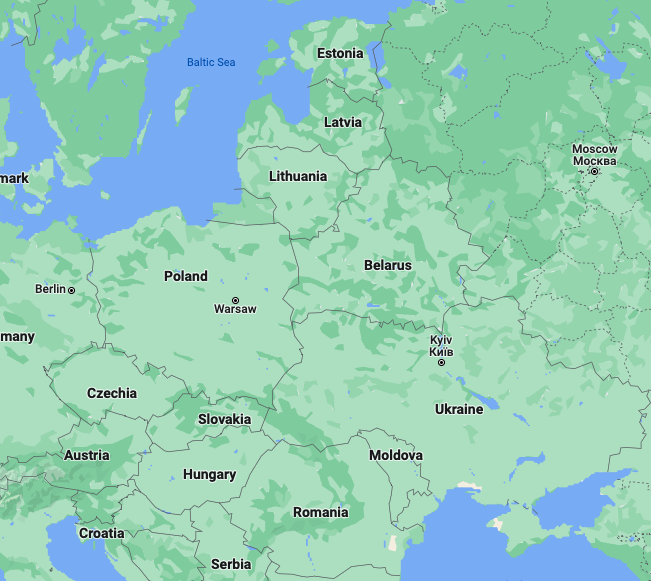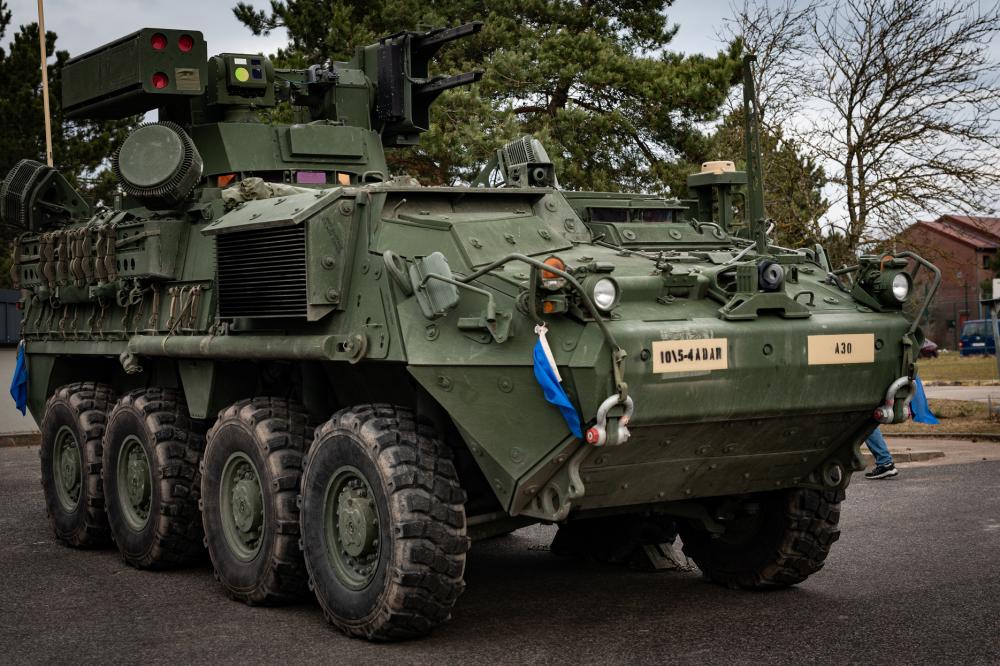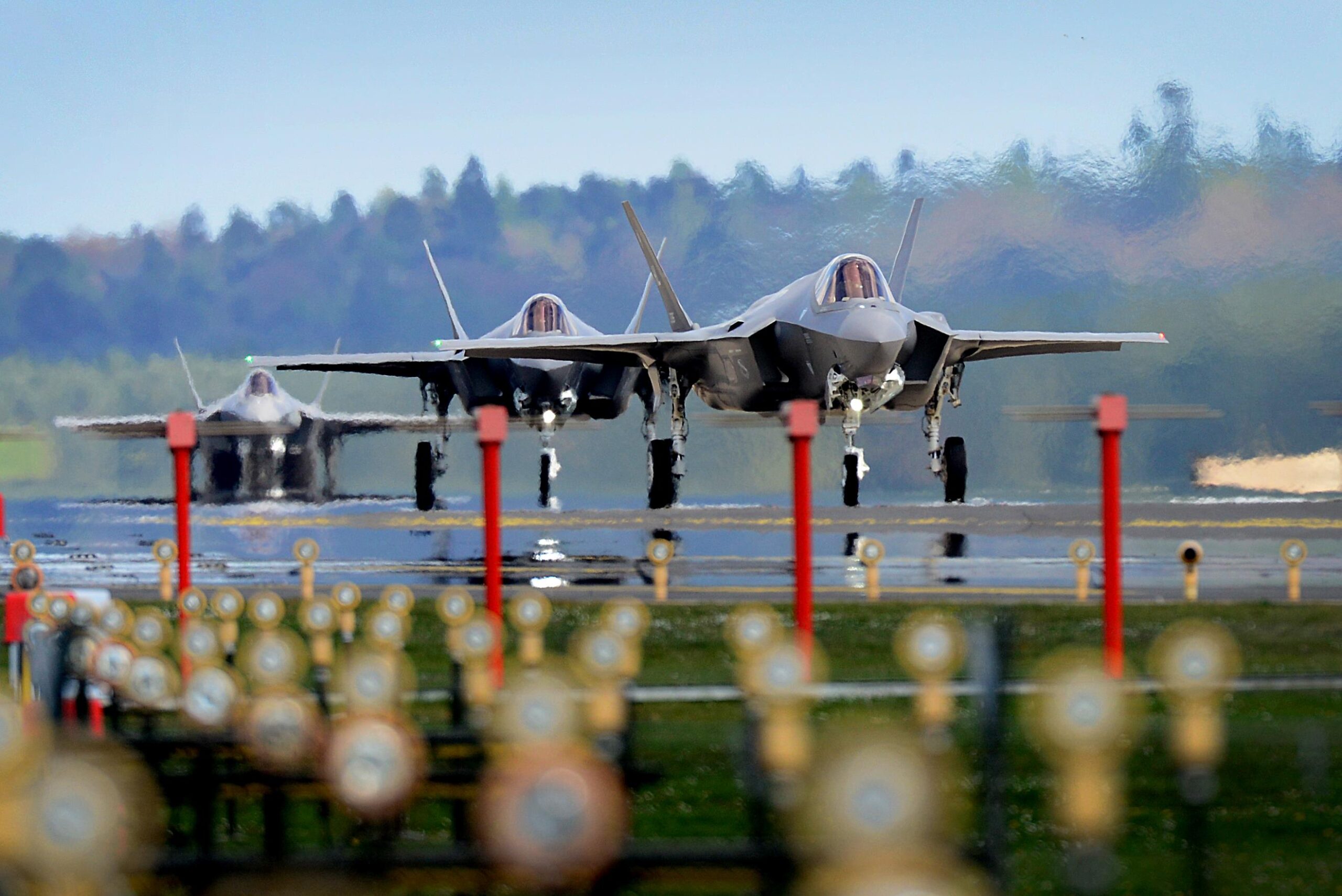As Russia’s war on Ukraine heads toward its fifth month, President Joe Biden on Wednesday announced a series of U.S. troop moves he said are designed to bolster NATO’s eastern flank.
Among other moves, the U.S. will permanently forward station the V Corps Headquarters Forward Command Post, an Army garrison headquarters, and a field support battalion in Poland. That would mark the first permanent U.S. forces on NATO’s eastern flank, the Pentagon said. Biden also announced a new rotational Brigade Combat Team in Romania, the forward stationining of a short-range air defense battery in Italy, the forward stationing of two squadrons of F-35s at RAF Lakenheath in the United Kingdom and plans to add two additional destroyers to the four already stationed at U.S. Naval Station Rota, Spain.
The moves, some of which have been planned for a while, were announced in Madrid during the second day of the NATO summit there.
“We’re sending an unmistakable message, in my view, and I think yours as well, that NATO is strong, united, and the steps we’re taking during this summit are going to further augment our collective strength,” Biden said.
Those eastern flank countries – Poland, Romania, Lithuania, Lativa, Estonia, Romania, Bulgaria, Hungary and Slovakia – “are facing a heightened threat of a Russian leadership that has shown itself willing and capable of launching military attacks on bordering countries,” Asst. Secretary of Defense for International Security Affairs Celeste Wallander told reporters Wednesday morning.

The Pentagon declined to provide overall numbers for the new deployments, which are set to take place over the next several months, Wallander said. Nor would she say how many, if any of these troops, would be part of NATO’s increasing high-readiness force. Earlier this week, NATO Secretary General Jens Stoltenberg announced the organization was boosting its high readiness forces to well over 300,000. There are currently about 40,000 NATO Response Force troops.
“I can’t get into the total numbers that would add up from the force posture decisions, nor where they’re coming from for security and operational planning reasons,” Wallender said.
The rotational Brigade Combat Team stationed in Romania will maintain “an additional brigade on the eastern flank compared to our January 2022 posture,” the Pentagon said in a media release Wednesday. The U.S. has already moved troops from Germany there.
This new deployment “will maintain the ability to deploy subordinate elements across the eastern flank. This brigade will complement the other Brigade Combat Teams stationed and operating in Europe.”
The plan includes enhancing rotational deployments to the Baltics – which include armored, aviation, air defense, and special operations forces – “to reinforce Baltic security, enhance interoperability, and demonstrate the flexibility and combat readiness of U.S. forces.”
The U.S. presence in Germany is being increased as well, with the forward-stationing of an air defense artillery brigade headquarters, a short-range air defense battalion, a combat sustainment support battalion headquarters, and an engineer brigade headquarters – approximately 625 military personnel in total.

“These forces will enhance DoD’s air defense capabilities and enable support in Europe, which will provide key reinforcement to NATO capabilities and allow DoD to respond more effectively to threats against NATO’s eastern flank,” the Pentagon said.
These forces build upon the recent forward stationing of the Multi-Domain Task Force and Theater Fires Command in Germany, which Defense Secretary Lloyd Austin announced in April 2021.
The short-range air defense battery in Italy would consist of about 65 personnel.
Permanently forward stationing V Corps in Poland “will improve our command and control capabilities, interoperability with NATO, and management of prepositioned equipment,” the Pentagon said in its media release. There has been a V Corps presence in Poland for nearly two years.

“This action builds on the central role Poland has played in supporting NATO’s combat credible deterrence and defense posture.”
The U.S. will also continue to “maintain, and seek to enhance, its substantial rotational force presence in Poland.” That includes an Armored Brigade Combat Team, Combat Aviation Brigade element, and Division Headquarters element, “which enables DoD to deploy combat forces up and down the eastern flank.”
But the V Corps decision appears to be one of several components of this announcement that have been considered or underway for the past two years.
Biden’s announcement about V Corps apparently solidifies its presence in Poland, something that the Army first announced would happen in February 2020.

The unit’s flag was first unfurled in Poland during a ceremony Aug. 4, 2020, in Krakow.
Biden also announced the U.S. is working with Spain to increase the number of destroyers stationed at Rota from four to six.
That idea was posited as far back as February 2020, when then-U.S. European Command boss Air Force Gen. Tod Wolters testified before Congress that he wanted two extra Arleigh Burke-class guided missile destroyers at Rota “to provide sensing and to enable command and control across a wider area,” according to Defense News.
“Those two additional DDGs would allow us the opportunity to continue to improve our ability to get indications and warnings in the potential battlespace and also dramatically improve our ability to better command and control,” Wolters told the panel.
The Rota-based destroyers are also uniquely configured for operations in the European Theater, which you can read more about here.
Meanwhile, while Lakenheath officials confirm to The War Zone that Biden is calling for two new F-35A squadrons there, it is unclear how the base will handle the additional aircraft. There are already two F-35A squadrons at RAF Lakenheath, the 495th Fighter Squadron and the 493rd Fighter Squadron. We’ve reached out to officials for more clarity and will update this story with any new information we get.
RAF Lakenheath was selected in 2015 to host the first U.S. F-35A squadrons in Europe “based on very close ties with the RAF, existing infrastructure, and combined training opportunities,” the base said in a December 2021 media release. “The U.K. is a critical component in training and combat readiness for Air Forces in Europe due to its excellent airspace and F-35 program partnership.”

The 495th FS arrived in December 2021, followed by the 493rd FS, which arrived in April. We reported on those deployments at the time.
Overall, the Pentagon has deployed or extended over 20,000 additional forces to Europe in response to Russia’s all-out assault on Ukraine since February, “adding additional air, land, maritime, cyber, and space capabilities, bringing our current total to more than 100,000 service members across Europe.”

That number included extending a Carrier Strike Group, deploying additional fighter squadrons and airlift/tanker aircraft, and deploying an Amphibious Readiness Group and Marine Expeditionary Force. DoD also added a Corps Headquarters, Division Headquarters, an Infantry Brigade Combat Team (IBCT), an Armored Brigade Combat Team (ABCT), an M142 High Mobility Artillery Rocket Systems, or HIMARS, battalion, and multiple enablers to the existing Corps Forward Command Post, Division Headquarters, and three BCTs already stationed in or deployed to Europe.
Because the moves announced Wednesday by Biden largely involve rotational deployments, the Kremlin was not informed beforehand, said National Security Council spokesman John Kirby.
“There has been no communication with Moscow about these changes, nor is there a requirement to do that,” he told reporters Wednesday morning. “The vast, vast majority of these force posture changes we’re making are heel-to-toe rotational deployments.” Heel-to-toe deployments refer to one unit immediately replacing another.
While the presence will remain persistent, Kirby said the individual units would swap out.
“We’re setting this up in such a way that we can rotationally deploy at higher levels in Europe than we had before the invasion.”
There are of course additional concerns yet to be addressed.
Finland and Sweden are one step closer to joining NATO, a move we wrote about recently. Both Lithuania and Norway have halted Russian shipments to far-flung enclaves surrounded by their territory.
And the Russians have announced it will provide nuclear-capable Iskander short-range missile systems to Belarus.
Given all these developments, it is not inconceivable that Pentagon could find itself having to boost U.S. troop presence in Europe beyond the numbers it has yet to announce.
Contact the author: howard@thewarzone.com
